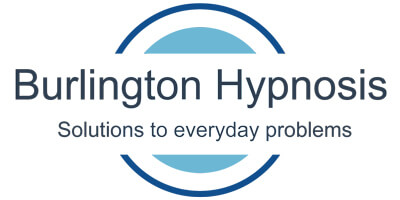1- We all experience hypnosis at daily in the form daydreaming, zoning out.
2- Hypnosis is not sleep, but a rather moment of meditative thought.
3- The earliest examples of hypnosis are found in tribal ceremonies of early humans.
4- One of the earliest descriptions of hypnosis was in Egyptian hieroglyphics in 1500 BC.
5- Egyptians, Greeks and Romans used hypnosis for medical and religious purposes.
6- British Medical Association (BMA) formally recognized hypnosis in 1892.
7- Sigmund Freud used hypnosis with his patients while developing his theories on psychoanalysis.
8- Hypnosis was used in 1st and 2nd world wars to treat combat neuroses.
9- American Medical Association (AMA) approved a report on the medical uses of hypnosis in 1958.
10- Catholic Church recognized hypnosis as a natural part of our own ability in 1847.
By: Paul Gustafson RN CH
Hypnotherapy can sever the chronic tinnitus hypervigilance. [info]
1) All hypnosis is the same: Hypnosis is all about rapport, listening to the clients concerns and explaining the process to develop trust and put the client at ease. I email clients an audio file so they come in with an idea of who I am and what to expect. Those who have had prior experience with hypnosis usually mention the variation in style between practitioners.
2) Subliminal messages work: Subliminal Ads involve messages that you can’t hear. Common sense says they shouldn’t work, and there’s no research proving that they do.
3) Some people can’t be hypnotized: The only reason someone can’t be hypnotized is if the individual chooses not to or is incapable of following simple instructions. In over 20 years as a hypnotist I have experienced this only a couple of times which was when I was knew to the field and inexperienced.
4) Hypnosis is for the weak minded: Hypnosis was accepted by the AMA as a legitimate adjunct modality in 1958 so we are decades past the debate as to whether it is ‘real’ or not. The only debate that exists is if it is right for the individual. I see clients from all walks of life from executives terrified of giving presentations in the board room to physicians and lawyers fearful of passing exams and to truck drivers wanting to quit smoking. These days everyone is learning about the power of thought and how hypnosis is the best tool to get the job done.
5) One relinquishes free will with hypnosis: I’m happy to report I never hear concerns from clients about this ridiculous relic originating from the early 20th century. There are decades of scientific research validating the healing power of thought. Hypnosis is not the process of relinquishing control but rather tapping into powerful inner resources individuals were previously unaware of.
By: Paul Gustafson RN CH
Get things done: Many spend so much time focused on what needs to be done, nothing is accomplished. Hypnosis not only helps individuals experience satisfaction with even the smallest step forward but also offers a view into their clutter-free future. It’s a simple process of spending more time thinking envisioning what you want than what you struggle with.
Get over a relationship: Hypnosis helps you release the unpleasant past and enhance new enthusiasm about the days to come. It doesn’t erase the past it just helps you focus more of what you want than what you previously struggled with. It is the best re frame tool there is.
Find a fulfilling career: Hypnosis creates a sense of calm, centered peacefulness. From such clarity of thought comes new confidence and creativity. Rather than feeling trapped and powerless individuals using hypnosis see opportunity and freedom.
Don’t sweat the small stuff: We are all creatures of habit, both of action and thought. Even patterns of simple worry can become rooted and automatic. I see many clients overwhelmed by an array of simple concerns that just pile up to the point of effecting quality of life. Hypnosis offers a refreshingly rapid disconnect from these concerns.
Have more fun: Every client leaves my office with a smile because of the wonderful cathartic qualities of hypnosis. It creates a sense of unexpected freedom and relief and with repetition becomes the rule rather then the exception. Those who routinely enjoy this peaceful process laugh more and find more ways to add joy and fulfillment top their lives.
By: Paul Gustafson RN CH
The experience of hypnosis not only varies from person to person but even for each individual from session to session. It is as a unique combination of deep physical relaxation and heightened awareness. Many describe the soothing weight of relaxation in their arms or legs, or they may feel as though they are sinking into the surface beneath them. Others describe sensations of floating.
As clients progress from session to session, along with home session reinforcement, they further develop increased hypnotic skill and ability. Some even report a sensation of complete mind-body separation, as though their physical presence is no longer part of the equation.
Individuals also frequently experience profound clarity or resolution with problems that previously were complex and overwhelming. It is also very common for clients to find solutions to problems which were unrelated to the problem being addressed.
Most hear and remember everything that is said to them during a session, although on occasion, some may dip so deeply into subconscious thought that they may not consciously hear or recall segments of the session. This is not a problem because the subconscious mind absorbs everything of value.
For those who happen to doze off during a session, the therapeutic benefits are still absorbed. The subconscious mind is open and active when hypnotized and also when sleeping. When we sleep, the conscious mind sleeps. During hypnosis, the conscious mind is just less active, quietly monitoring things from the background.
A majority of my clients with demanding schedules find that bedtime is the only available time they have to listen to their home reinforcement sessions. The therapeutic value of the session is still absorbed but the client just doesn’t enjoy the ride as much. In general, the best time of day to listen is in the morning. After a full night’s sleep, you will be more engaged with the session, and you will also start your day with a burst of positive energy, clarity, and enthusiasm.
Hypnosis also offers dramatic freedom from lingering problems. For example, in my office there is a small sofa as well as a recliner. When a client comes in for their initial office visit they usually sit on the sofa, as it is closer to the entrance. This is when they share the details of their problem. The pre-talk, as it is commonly described, is not only helpful to the practitioner but it also gives the client the opportunity to offload their concerns, which helps them relax more easily.
Usually after 15-30 minutes I have gathered all the necessary information and when the client appears to be comfortable, I ask them to move over to the recliner, where I then begin the hypnosis session. After the session, I always ask if they feel disconnected from the problems they described when they were sitting on the couch. The answer is consistently positive. Then I ask them if the problems are anywhere in the room, and 75% say no.
They recall the pre-session conversation but after the hypnosis session, they feel separated from the problem. The overwhelming majority of first-visit clients leave with a new positive perspective regarding their goal. If they never followed up with another session, that new perspective would fade away, and they would revert right back to the problem patterns which brought them to see me in the first place. It is with routine reinforcement that this feeling of empowerment transitions from a concept to lasting reality.
By: Paul Gustafson RN CH









